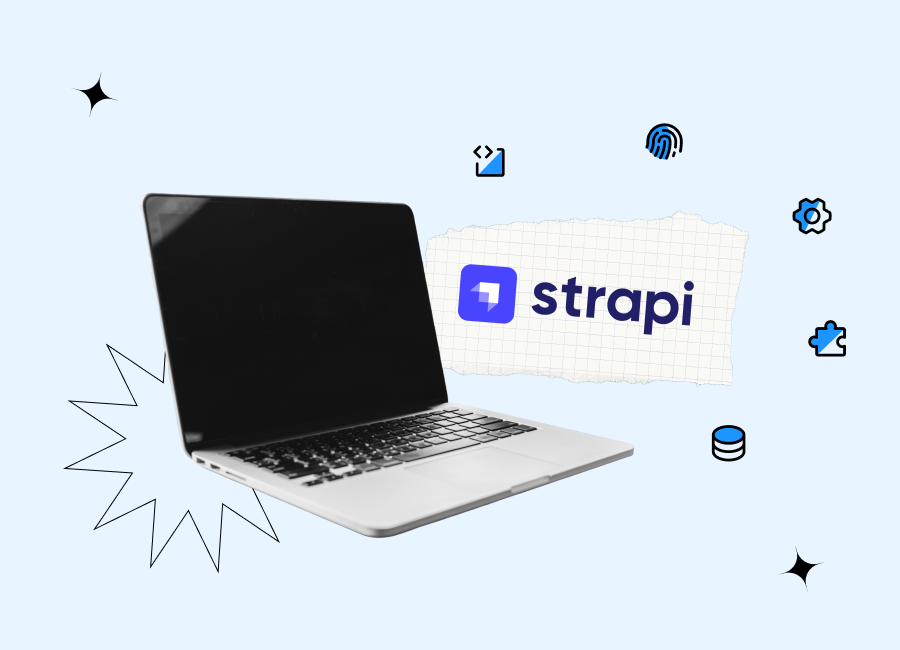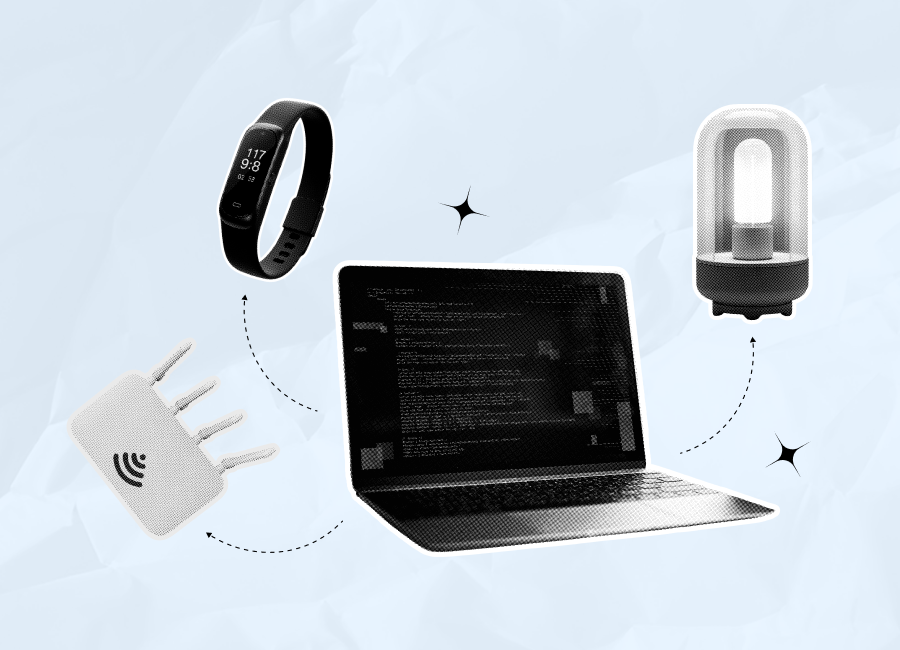Navigation apps have already become quite common, not only for professionals across various industries but also practically for everyone in the modern world. They facilitate logistics and trip planning. Moreover, GPS-powered functionality can be found in a variety of apps that serve entirely different purposes. Given this, it is not surprising that navigation app development is highly popular today. At Cogniteq, we have rich expertise in building solutions of this type, and we’d like to share our insights. In our article, we will explain how to create a navigation app and provide practical recommendations on how to ensure that your solution meets market standards.
Navigation apps: Market overview
To begin with, let us answer one of the most basic questions: What is a GPS navigation system? It can be defined as a technology that utilizes satellite signals to provide precise location information. Such solutions have various use cases ranging from everyday navigation to specialized applications in aviation and logistics.
The size of the navigation system market is around $44.38 billion in 2024. According to experts, it can reach $70.96 billion by 2029. These figures show that the expected CAGR for the forecast period (2024-2029) will be close to 10%.

It’s important to mention that while a GPS navigation application can be a stand-alone product, such tools can be also a part of a bigger solution. For example, ticket booking apps can offer navigation features to help users find the event venues.
At the same time, today we can observe the growing demand for real-time data in multiple spheres, including logistics, supply chains, autonomous robots, etc. All this greatly contributes to the further adoption of navigation systems and interest in GPS navigation app development from the side of businesses.
How to develop a navigation app: Step-by-step guide
While thinking about how to create a navigation app, you should understand that one of the keys to a successful project is careful planning. That’s why we recommend you attentively study the plan offered below and rely on such steps in your project realization.
- Planning and research. To begin with, you need to think about the concept of your future app. It will be helpful to study the market, detect the existing demands, and find a way to address them by means of your GPS navigation application.
- Discovery phase. At this stage, your development team will start its work with your requirements. Mainly, this phase is devoted to gathering as much information from you and other stakeholders as possible. Thanks to this info, developers will be able to estimate the scope of work, choose the development stack, estimate the budget, set deadlines, etc.
- Design and user experience. At first, your team will work on prototypes and wireframes of future interfaces. It is crucial to make your app clear and user-friendly. And at the same time, its design should meet the latest market standards and be visually appealing.
- Development. It is the most responsible and time-consuming step. The team will be working on building your app’s functionality. Developers will also integrate all the required services like mapping and geolocation.
- Testing and QA. Your solution should be well-tested and absolutely bug-free. Various types of tests are often conducted already at the development stage. Nevertheless, it is also important to perform regression testing. Its main goal is to check whether all the components of your app function as they are supposed to after the introduction of all the changes.
- Support and maintenance. When the app is launched, you should continuously monitor its performance, analyze user sentiment, and introduce updates.
The best technology stack for your GPS navigation application
To ensure the high performance, reliability, and scalability of your app, it is vital to opt for the right tech stack. Here is a list of the most widely used technologies for the development of such solutions:
- iOS development: iOS SDK, Swift, Objective-C, SwiftUI, UIKit;
- Android development: Kotlin, Android Studio, Java, Jetpack Compose;
- Cross-platform development: React Native, Flutter, Xamarin;
- Backend development: Node.js, PHP, Python, Ruby, Java, Golang, Rust;
- Frontend development: Angular, Vue.js, React, JavaScript;
- Database: MySQL, PostgreSQL, MongoDB;
- Cloud platform: AWS, Google Cloud, Microsoft Azure;
- Maps: Google Maps API, OpenStreetMaps API, Mapbox API.
Navigation app development: Key features to consider for your solution
Before building a navigation app, you should carefully consider its functionality. While your app should be unique and stand out from the competition, it must also address essential features that users expect.
- Navigation and geopositioning. These are obligatory things that we can’t get rid of for this type of software. Your app should have a map. In one of our previously published blog posts, we explained how to choose the most appropriate Maps API for your custom solution. To find the location of a user and show the route to different destinations, such solutions rely on GPS. To increase the accuracy of navigation, it is recommended to enrich an application with the Cell ID functionality. It means that for such purposes, an app will also use data received from the cell towers of mobile operators.
- Search functionality. You can provide users with the ability to search for locations not only by address but also by place name, or category (for example, restaurants, gas stations, etc).
- Voice directions. It’s quite natural that users and, especially drivers, won’t be able to track their movements and the next directions on the go. That’s why it is necessary to include the voice functionality.
- Rerouting. If a driver has made a wrong turn, it's vital to get a new route as quickly as possible. Your app should be able to recalculate a new route based on changed conditions within a couple of seconds.
- Offline maps. With downloadable maps, people will have to leverage accurate navigation even without an internet connection. However, to make sure that your app will be helpful even in its offline mode, you should regularly update your maps and notify users when a new version is added.
 There are also some other ideas that you may choose for your solution:
There are also some other ideas that you may choose for your solution:
- Integration with local public transportation services;
- Traffic updates;
- Speed limit alerts;
- Reviews and ratings:
- Parking assistance with information on nearby parking lots and their availability;
- Calendar integration;
- Social media integration;
- Compatibility with wearable devices.
GPS navigation app: Possible issues
When searching for how to make a navigation app, it’s crucial to be aware of potential issues that may arise after the launch. We’ve compiled a list of common problems that can significantly impact position tracking and location detection:
- Obsolete Hardware: It’s impossible to predict the exact devices your users will have. While developers often target the newest devices, older hardware might struggle with receiving data from satellites or mobile operator towers, leading to performance issues.
- Insufficient Number of Satellites: To ensure accurate location tracking within 10 meters, an app needs signals from at least 7 satellites. If fewer satellites are available, the accuracy of the location data will decrease.
- Signal Bouncing: High population density or numerous large buildings can cause GPS signals to bounce, leading to delays and inaccuracies in receiving the signal.
- Old (Incorrect) Maps: Keeping your maps up-to-date is essential to ensure users receive accurate and reliable information.
Being mindful of these issues can help you effectively navigate the challenges of developing a navigation app.
Want to hire a team with expertise in navigation app development?
At Cogniteq, we work with the most advanced and reliable technologies that will ensure the highest performance of an app of any complexity.
How much does it cost to build a GPS navigation application?
One of the most important considerations before starting your project is its cost. However, estimating even an approximate budget is challenging without analyzing the concept of your future solution.
When you establish cooperation with a development team, you will be asked to share your app requirements. To calculate the cost of navigation app development, experts will take into account the following factors:
- The idea of your app itself: This includes its goals and key functionality.
- The type of your app: Decide whether it will be an Android, iOS, or cross-platform application.
- The number and complexity of desired features: More features and greater complexity can increase development costs.
- Planned integrations: Integration with other systems or services may impact the budget.
- Tech stack: The technologies used can influence the overall cost.
- Special expectations and demands: Your timelines and team composition preferences will also affect the budget.
- The engagement model: How you choose to work with the development team (e.g., fixed-price, hourly rate) can influence the cost.
Only after a detailed analysis can developers provide figures that will help you with budget planning. However, when you work with a professional company, like Cogniteq, you can expect that the team will find the right approach to deliver a high-quality solution within your budget.
Navigation app development by Cogniteq
When searching for a team to bring your project to life, it's highly recommended to choose a company with relevant experience. Today, our portfolio includes a range of successfully launched software solutions with GPS functionality, which serves as a strong testament to our expertise.
One of the digital products that our team worked on was Dog Tracker Nano, an IoT app for smart GPS dog collars. At the time, when our client turned to us, the company had a basic version of the app that was connected to the collar to control a dog. However, the app had to be fully redesigned to ensure better functionality, usability, and performance.

The delivered solution has several modules and one of them is “Where is my dog?”. It lets users track the location of their pets and their motions on the map in real time.
Moreover, the app can monitor and record the daily walks and activities of the dog, while the geofence module helps to create a virtual fence by restricting dogs' movements outside the permitted walking zone. In those cases when a pet leaves the indicated area, a user will be immediately notified.
Another example of a solution with GPS functionality was an e-charging app. The application was designed for electric vehicle drivers. It helps users find the nearest available charging stations and parking lots. It also offers features for tracking vehicle charging status and charging prices in different locations. Moreover, via the app, drivers can book a charging station for a particular time. Thanks to the integration of Google Maps, users can not only find the exact location of the required changing station but also define the best route.

It’s also worth mentioning that our team faced a challenging task in this project. We joined when it was already in the active development stage, requiring our experts to quickly integrate into the existing processes with a high level of professionalism.
With the experience gained, our developers now have a deep understanding of the requirements for navigation apps and related functionalities. If you are considering launching such a solution, you can fully rely on us for all development-related services. We guarantee not only the highest quality of the final solution but also the most suitable terms of cooperation based on your business needs.
For more information about how to develop a GPS navigation app with our help, do not hesitate to contact us.
FAQ
What is the best GPS navigation application?
Today there are a lot of apps with similar functionality. Some of them like Google Maps, Waze, Maps.me, or Apple Maps have gained fame all over the world and now boast enormous popularity. Nevertheless, it is difficult to name the only leader among them as here we should take into account the exact purposes that an app will be used for and the individual preferences of each person.
Which tech stack should be chosen for navigation app development?
The choice of a tech stack should depend on a row of factors, such as the type of your app (an iOS, Android, or cross-platform solution), the desired features and integration, performance requirements, development time, and the budget that you can allocate for the project realization.
How to make a navigation app that will be as popular as Waze?
One of the most important things to do is to offer a solution that potential users really need and want to have. We strongly recommend you conduct preliminary market research and interviews with stakeholders at the stage of ideation. The technical side also matters. That’s why you should choose a navigation app development company with due attention and caution.










































